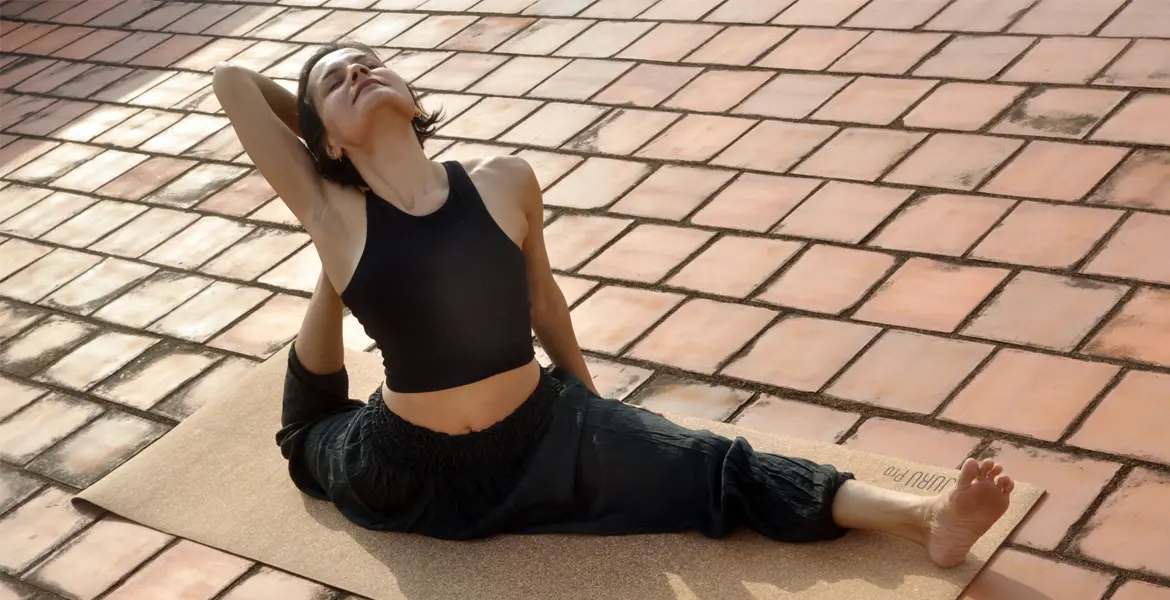7 Ways Yoga Can Help in Healing Addiction
According to research published by drugfree.org, 23.5 million Americans aged 12 and above are addicted to illegal and prescribed drugs. That equates to two out of every twenty Americans, regardless of social or economic status. Every day, around 120 individuals in the United States die as a result of a drug overdose. The surge in heroin usage across the country is only one factor contributing to the rising number of overdose deaths.
Doctors struggle to discover the proper treatment regimen, while families struggle to help their loved ones. Treatment clinics are costly, and insurance seldom covers them entirely. When you consider that the average addict visits three different treatment clinics and that relapse rates hover around 40%, it is clear that there is no simple, one-size-fits-all answer.
While 12-step programs are still at the heart of Medically-Assisted Drug & Alcohol Detox Services, an increasing number of them adopt a holistic approach. Although celebrities such as actresses and models have made public statements about using yoga to cure their addictions, yoga and meditation are now becoming more widely prescribed as part of everyone’s treatment plan.
What is Yoga?
Yoga is a collection of mental, physical, and spiritual practices that enhance one’s mood and sense of well-being. Body posture, stretching methods, and breathing modulations will be used by those who practice it to enhance relaxation, physical strength, and spirituality.
Yoga is a thoughtful physical exercise that helps people cope with stress, and it’s essential for people in recovery from addiction. Yoga utilizes mental and physical skills to help lessen drug cravings by targeting the portion of the brain, the area which is damaged by a substance use disorder. Yoga is an excellent supplement to treatment for recovering addicts, both during and after treatment. Yoga is a healthy activity that is a natural type of healing (holistic). When yoga couples with other standard substance misuse treatment methods, it is most effective.
7 Ways Yoga Can Help in Healing Addiction
Multiple studies have found that combined with standard treatment, mindful activities such as yoga can assist patients in overcoming chemical addiction. One of the main reasons for this is influencing yoga and meditation on the neurotransmitter GABA in the brain. Swedish research compared the effects of standard therapy with traditional treatment plus yoga on a group of people battling alcoholism. The results showed that the group that integrated yoga with their therapy had a drop in drinking.
Specialists recommend yoga as a treatment for heroin addiction. Female heroin addicts who had completed drug detox reported that practicing yoga improved their mood and overall quality of life. Yoga is compatible with heroin addiction therapy after extensive investigation.

Decrease anxiety and stress
Yoga has to help people cope with stress and anxiety, which can lead to substance abuse. There is a need to respond at a fast rate when you can watch stressful and challenging situations. You can observe and accept your feelings when you practice mindfulness, which reduces the amount of pressure you place on yourself.

Increase your awareness and attentiveness
People in recovery can employ mindful attention to understand their behavior patterns, including relapse and drug use triggers. Self-reflection emphasizes yoga, meditation, and mindfulness practices. The focus of mindfulness and yoga training is on awareness rather than reactivity. To put it another way, you become accustomed to detecting unpleasant sensations without having to respond or flee them.

Curb your desire
Relapse precedes cravings. Mindfulness training shows fewer cravings over time, even when people are experiencing negative or stressful emotions. According to one brain imaging research, smokers who pay attention to mindfully smoking pictures had less brain activity than those who did not get this training.

Enhance your mood
Negative emotions, as well as the desire to avoid them, might contribute significantly to relapse. Different types of yoga, particularly regular breathing exercises, have been found to help persons in addiction recovery improve their mood.
In one research, participants who had completed one week of alcohol detox aid by Sudarshana Kriya Yoga (SKY), a specific series of breathing techniques, showed lower stress levels. For 12 to 15 minutes, SKY employs three forms of sitting breathing methods guided by a teacher: triumphant breath (slow deep breathing), bellows breath (forced intake and expiration), and cyclical breathing of slow, medium, and fast cycles. After these movements, they practice 20 minutes of Yoga Nidra, which is a profound relaxation state. After only two weeks of breathing exercises every other day, researchers discovered that those who did breathing exercises had considerably fewer depression symptoms and lower stress levels.

Promote a non-judgmental mindset
Most importantly, mindfulness promotes a non-judgmental, compassionate attitude toward oneself and others, which aids in healing and rehabilitation. Yoga and meditation are mindfulness practices that help you accept yourself without blaming or criticizing yourself excessively. This capacity to be kind and compassionate to yourself helps to live in the present moment without being weighed down by past patterns or worrying about other people’s views and expectations.

Help to reduce pain.
While yoga may not provide instant effects, it may be an element of a pain management therapy strategy when performed regularly over time. Excess stress or tension is a common source of discomfort, and yoga is a great way to relieve both by relaxing the body. Yoga increases blood flow and circulation, decreasing inflammation in the body, all of which assist in alleviating pain.
The release of endorphins produced during yoga practice is perhaps the most necessary explanation for its pain-relieving properties. The body’s natural painkillers are endorphins.

It lessens the need for prescription medications.
When someone suffers from mental disorders like anxiety or depression, it’s not uncommon for them to seek medical help. Medication might become a need to survive and feel secure in a fast-paced environment. A decrease in prescription medicines may become a genuine possibility if you participate in or practice yoga.
Conclusion
Whatever sort of addiction you have, you can replace your commitment to obsessive thinking with a commitment to self-healing. As previously said, yoga assists us in letting go of old tales that bind us to our past so that we might venture into the unknown region of our future. You will find the reality of a bright, addiction-free world if you are honest about the sensations in your mind and body and give yourself a chance to break away from your habits. Yoga can assist you in this endeavor. It is time to do yoga regularly rather than doing it on International Yoga Day. The practice will improve your well-being and also boost your energy in day-to-day activities. The trend is particularly in buzz within the United States of America and is increasing in popularity across the nation.



Post a comment